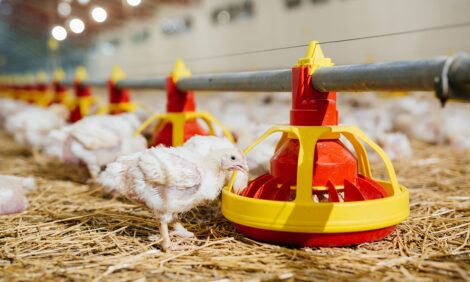



NCC's Peterson speaks on HPAI, Salmonella at Poultry Symposium
Peterson covered HPAI, biosecurity, processor line speeds, Salmonella and welfareDr. Ashley Peterson, senior VP of scientific and regulatory affairs with the National Chicken Council in the US, spoke recently at the Poultry Symposium in Rogers, Arkansas, hosted by The Poultry Federation.
Peterson covered many topics in her talk including avian influenza, biosecurity, processor line speeds, Salmonella and welfare.
Highly Pathogenic Avian Influenza
“Avian Influenza is still impacting our industry, which not only impacts what we deal with here, domestically, but it has trade impacts on our industry as well. We had a recent detection in California, which is concerning and a little bit different than what we've seen with this virus, specifically, what we dealt with in 2014 and 2015,” she said. “Biosecurity is the #1 thing that the industry can do to try to keep avian influenza out of poultry barns.”
Processor line speeds
She also talked about processor line speeds, noting that there are about 50 companies across the US who have a line speed waiver which means they can run up to 175 birds a minute.
There are new requirements that USDA has set forth for those companies as it pertains to worker safety, so those establishments can continue to run at a higher line speed. She explained that USDA plans to gather data to ensure that those establishments are safe for their employees.
Salmonella
“Another thing that we talked about at length was Salmonella. There are lots of activities within the agency pertaining to Salmonella,” she said. “Public health is the #1 priority for our industry and making sure that every chicken serving is consumed safely. There have been some outbreaks in past years associated with not-ready-to-eat but appears ready-to-eat stuffed chicken products, like chicken cordon bleu and chicken kiev. Fortunately, in the last seven years, there's only been one outbreak associated with that which - one is too many. The agency [USDA’s Food Safety and Inspection Service (FSIS)] on August 1 said that they would be declaring Salmonella an adulterant in that product class, and they would be setting a standard or a threshold at one CFU (colony-forming unit) per gram. We will see more in October.”
The USDA FSIS has also made an announcement on their thinking on a regulatory framework.
Peterson said despite the fact that Salmonella rates are going down in processing plants, there hasn’t been a decrease in cases or people getting sick from Salmonella.
“We're not seeing that shift in public health, so the agency is rethinking their framework and their strategy with regard to regulating Salmonella,” she said.
While a lot is still unknown, she said it may involve changing hazardous material (HazMat) plans, incoming flocks and measuring incoming load and product standards. More information is expected in October.
Welfare guidelines
The final topic discussed was the National Chicken Council boiler and broiler breeder welfare guidelines, which have been in place since 1999. The NCC is currently revamping the guidelines using the latest data and science.
The new guidelines will focus on key welfare indicators, identifying measurable outcomes that will ensure birds are raised humanely. It will also outline ways to audit so the industry can monitor and drive continuous improvement over time.
Monitoring pathogens
USDA announced their Salmonella initiative last fall and plan to collecting information and data to make a regulatory change. While those changes are still unknown to the industry, Peterson said the industry’s goal is to make sure that every chicken serving is served safely and consumers are having a great eating experience.
“If there are things that we need to be doing as an industry and looking at things a little bit differently, then by all means we're open to new ideas,” she said. “We do work to control Salmonella from farm to fork. We have very robust vaccination programs and sanitation programs, and biosecurity is very important. We use all of these things as part of a multi-hurdle approach to make sure that the birds coming in to the processing plant have very low levels of Salmonella. Then, in the processing plant itself, we have a number of interventions that we use throughout to reduce Salmonella as you get closer to the finished product.”
Peterson said they have a working group of processor members that have been meeting two or three times a year since 2015 and share best practices.
“We can all do better if we work together and bring data and know-how with the goal of continuous reduction,” said Peterson.









